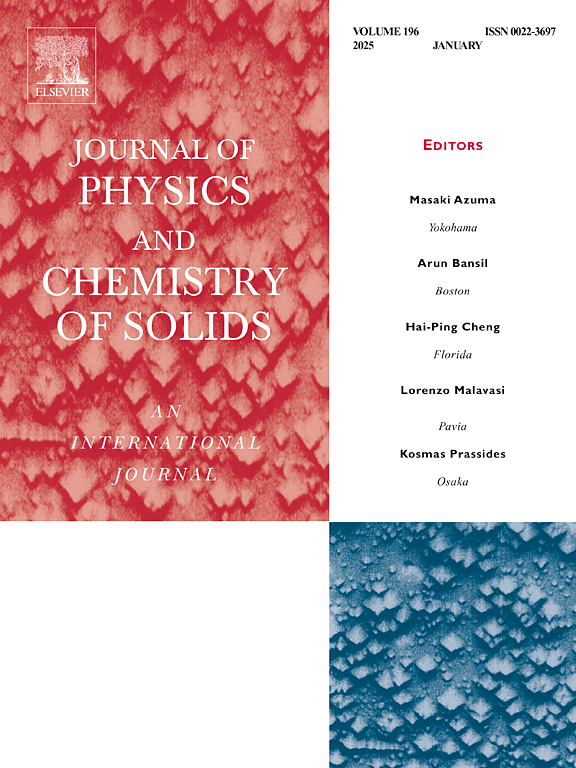A giant enhancement of capacitance in graphene supercapacitors by introducing on their electrodes recycled hydroxyapatite from bovine bone
IF 4.3
3区 材料科学
Q2 CHEMISTRY, MULTIDISCIPLINARY
引用次数: 0
Abstract
This study investigates the use of hydroxyapatite (HAp) from bovine bone waste (HAp-N) to produce supercapacitors (SC). For this purpose, graphene (G) electrodes were coated with a layer of the extracted HAp-N powder. With these G + HAp-N electrodes, the fabricated SC device, referred to as G + HAp-N-SC, exhibited a capacitance of 652.65 F g−1 and an energy density of 90.64 Wh kg−1. To see the effect of using the natural HAp, a second SC device was made with synthetic HAp (HAp-S), which was deposited on the SC electrodes. This device was named G + HAp-S-SC and achieved maximum capacitance of 526.37 F g−1 and energy density of 73.10 Wh kg−1. In addition, SCs made with HAp-N had 23 % higher capacitance than these made with HAp-S. In addition, HAp-N was combined with Vanadium Oxide (V2O5, VO) in a physical mixture of 50 wt%. The HAp-N/VO mixture was deposited on the G electrodes and the SC labeled as G + HAp-N-VO-SC was fabricated. This third device showed an exceptional capacitance of 1698.02 F g−1 and an excellent energy density of 235.83 Wh kg−1. The G + HAp-N-VO-SC device made with VO had 160 % higher capacitance compared to the G + HAp-N-SC device. In addition, both HAp-N and VO contained abundant oxygen vacancy defects, which acted as electron traps according to UV–Vis and Raman measurements. In addition, XPS analysis revealed that the VO with different oxidation states of 5+, 4+ and 3+ contributed to the storage of charge through redox reactions. Interestingly, the thermochromic property of the VO allowed the operation of G + HAp-N-VO-SC device at a high temperature of 80 °C. In fact, under temperature of 80 °C, the device retained 91 % of its initial capacitance after 1000 charge/discharge cycles, while the capacitance retention at room temperature (RT), was 95 %. Meanwhile, 92 % of the primary capacitance of the G + HAp-N-VO-SC device was retained after 1000 bending cycles at RT. Overall, the direct use of HAp from bovine bone waste for the fabrication of SCs is promising for the development of low-cost energy storage devices. In fact, the high energy density obtained from the HAp based SCs (which are compact and flexible) suggests that they could be used as energy source for wearable electronics.

求助全文
约1分钟内获得全文
求助全文
来源期刊
CiteScore
7.80
自引率
2.50%
发文量
605
审稿时长
40 days
期刊介绍:
The Journal of Physics and Chemistry of Solids is a well-established international medium for publication of archival research in condensed matter and materials sciences. Areas of interest broadly include experimental and theoretical research on electronic, magnetic, spectroscopic and structural properties as well as the statistical mechanics and thermodynamics of materials. The focus is on gaining physical and chemical insight into the properties and potential applications of condensed matter systems.
Within the broad scope of the journal, beyond regular contributions, the editors have identified submissions in the following areas of physics and chemistry of solids to be of special current interest to the journal:
Low-dimensional systems
Exotic states of quantum electron matter including topological phases
Energy conversion and storage
Interfaces, nanoparticles and catalysts.

 求助内容:
求助内容: 应助结果提醒方式:
应助结果提醒方式:


